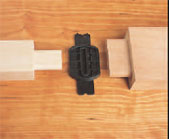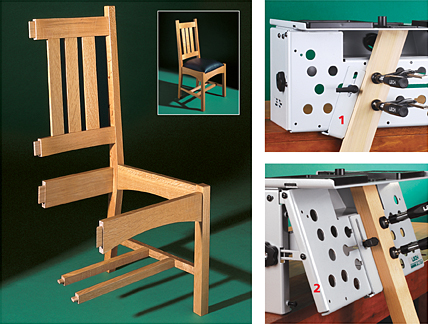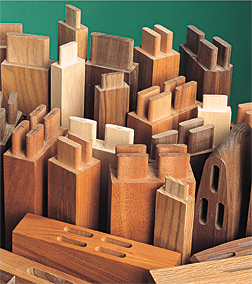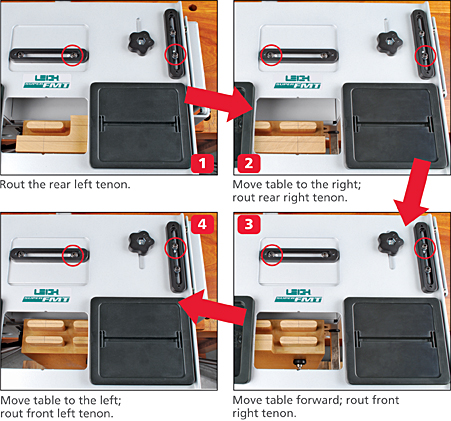Leigh Super FMT Frame Mortise & Tenon Jig
Joint Options
Angled Joints
The Super FMT has made chairmaking easy!
Chairmaking is demanding to say the least. Every joint in a chair is subject to extraordinary stresses and each joint must be crafted with precision. Even the simplest of chair designs, like the one pictured above, require angled and compound angle joints. The Super FMT was designed to meet the rigorous demands of chair construction.
- All tenon workpieces are placed against the sidestop fence. Its unique design allows angles, left or right of the vertical, up to 45º.
- The clamp plate also angles upwards to a maximum of 30º. A compound angle can be created using a combination of sidestop and clamp plate angles.
Multiple Joints
It's remarkably easy to set up perfectly aligned multiple mortise & tenon joints on the Super FMT. Precision and repeatability are made possible by adjustable table limit stops (circled below) that control the table's range of motion in both X and Y axes. With each mortise or tenon position sighted and limit stops set, you're ready to rout double, quadruple, or even triple joints with the same ease and precision as a single mortise & tenon.
Double and Quadruple Joints
The sequence below shows each step in making double and quadruple joints. In steps 1 and 2, the side-to-side limit stops are set to produce double inline tenons. Steps 2 and 3 set the front-to-back limit stops which are used to produce side-by-side tenons.
Triple Joints

Miniature Joints
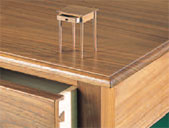
Floating Tenons and Doweling
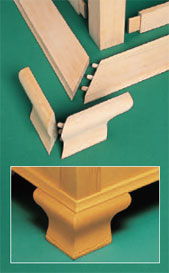
Wider or Narrower Joints
